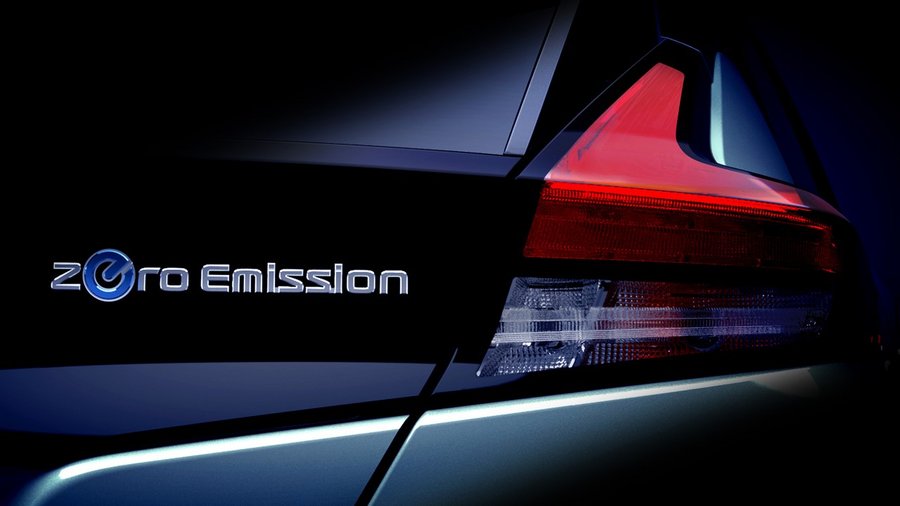New 2018 Nissan Leaf teaser officially reveals tail lamp design

A "Zero Emission" badge can be spotted near the tail lamp. It looks like the C-pillar is in black and the upper portion of the tailgate is also in the same paint, just like in the Nissan IDS Concept.
For its second generation, the Nissan Leaf has undergone a major design overhaul. The all-new model has notably different proportions compared to the first-gen model. It borrows cues from the Nissan IDS Concept and the fifth-gen Nissan Micra. The all-new model looks like it has grown in dimensions. For reference, the outgoing Leaf is 4,445 mm long, 1,770 mm wide and 1,550 mm tall.
The first-gen Nissan Leaf is available in 24 kWh and 30 kWh models, offering a driving range of 228 km and 280 km respectively. The next-gen Nissan Leaf is said to have 40 kWh and 60 kWh battery options. Spy media has revealed that the car, most likely in its base battery option, that has a driving range of 265 km. The higher capacity option, probably 60 kWh, would offer 350 km+ range.
The all-new Nissan Leaf will feature Nissan ProPILOT, which is already available in the Nissan Serena and Nissan X-Trail. A part of this autonomous driving tech suite is ProPILOT Park. The autonomous parking system, using cameras and sonar, gives the car the capability of parking itself in parallel, angled, front or straight back-in parking spots. The car takes over the control of throttle, brakes and steering when using this system.
Another detail known of the redesigned Leaf is the e-Pedal. The driver can slow down and stop completely through the modulation of the accelerator pedal.
The 2018 Nissan Leaf should go on sale in Japan later this year. More details will emerge at the debut on 6 September 2017. To understand the market for EVs in India, Nissan is studying the next-gen Leaf. The Japanese automaker is open to local assembly but does not expect to rake in big volumes.
